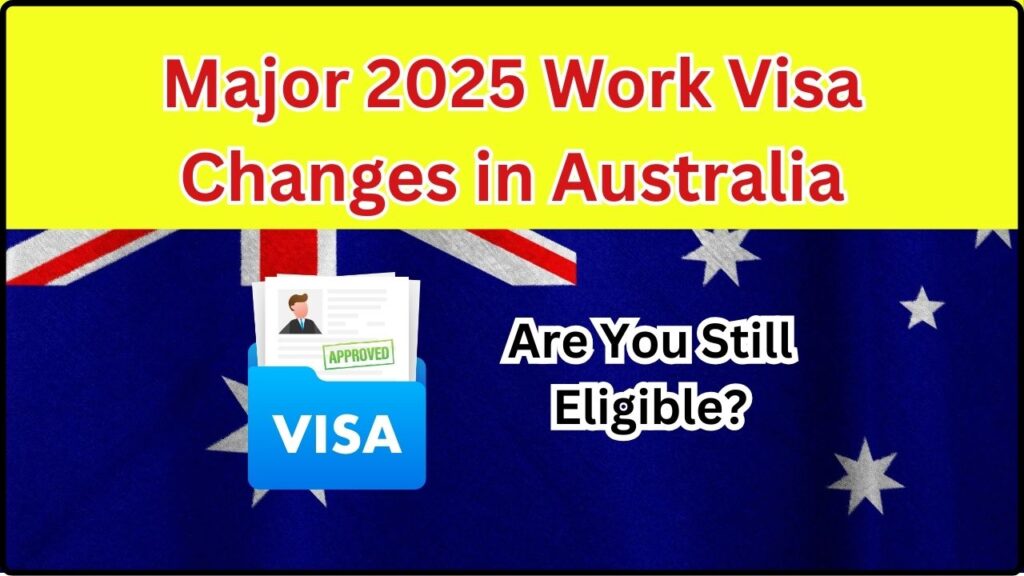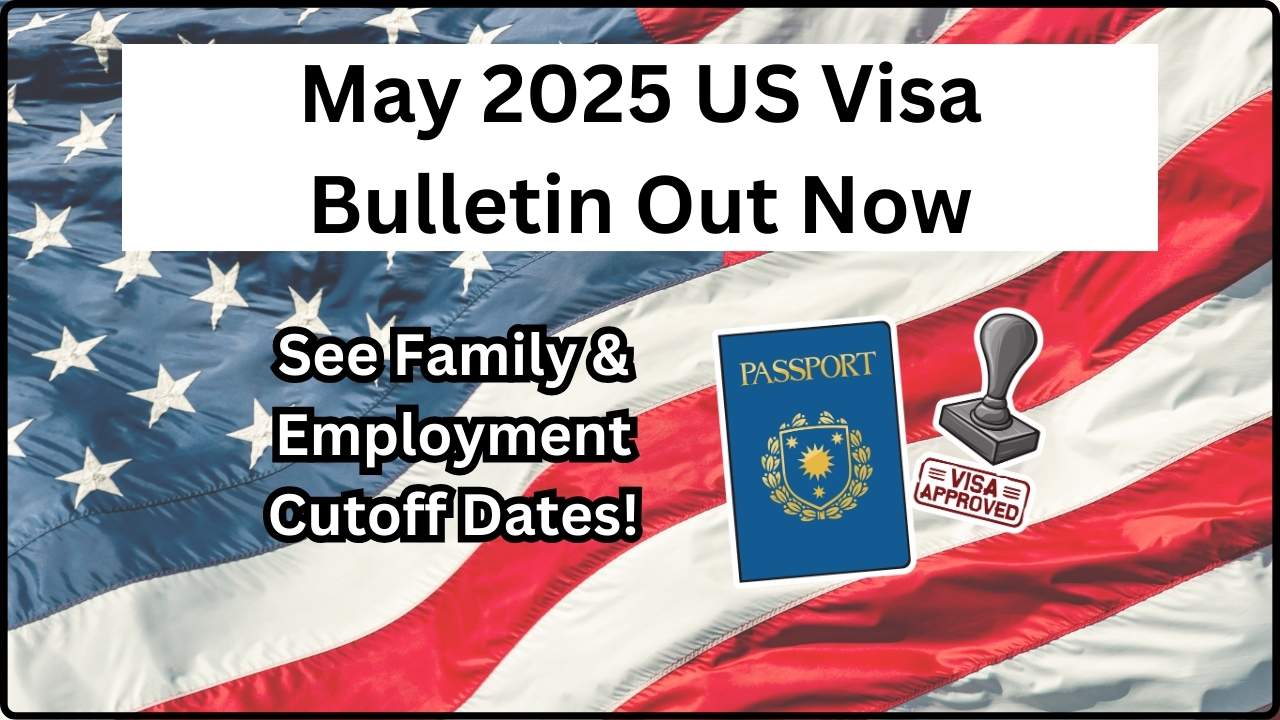
Major 2025 Work Visa Changes in Australia: Australia’s 2025 work visa changes are reshaping the country’s immigration landscape in a big way. If you’re a skilled worker, recent graduate, student, or even an employer looking to hire overseas talent, these reforms could significantly impact you. In this article, we’ll break down all the new visa rules in simple terms. Whether you’re just curious or preparing to lodge your application, we’ve got you covered with expert insight, practical guidance, and official resources.
Major 2025 Work Visa Changes in Australia
The 2025 Australian work visa changes aim to streamline skilled migration, encourage global talent, and strengthen the integrity of the system. For many, the changes open up new opportunities. But for others, particularly those looking to stay long-term without clear skills, the bar has been raised. If you’re planning to migrate to Australia, now is the time to get your documents in order, check your eligibility, and speak with a migration expert.
| Change | Details |
|---|---|
| Skills in Demand (SID) Visa | Replaces Temporary Skill Shortage (TSS) Visa; 3 new pathways introduced: Specialist, Core, Essential Skills. |
| Work Experience Requirement Reduced | Only 1 year of experience needed (down from 2 years). |
| Core Skills Occupation List (CSOL) | New occupation list includes over 450 eligible jobs. |
| Job Mobility Period Increased | Visa holders get 180 days to find a new employer if they leave their job. |
| Path to Permanent Residency (PR) | More streamlined with time counted across multiple employers. |
| New National Innovation Visa (NIV) | For globally talented individuals in priority sectors; replaces Global Talent Visa. |
| Graduate & Student Visa Reform | Age limit for graduates lowered to 35, financial & English requirements tightened. |
| Migration Cap Slashed | Migration intake to be reduced to 260,000 by 2025. |
What is the New Skills in Demand (SID) Visa?
One of the most important changes in 2025 is the introduction of the Skills in Demand (SID) Visa, replacing the older Temporary Skill Shortage (TSS) Visa (subclass 482). The SID visa is divided into three clear pathways:
1. Specialist Skills Pathway
- Designed for high-income professionals.
- Must earn at least AUD $135,000 per year.
- Fast-track processing times.
2. Core Skills Pathway
- Includes occupations on the new Core Skills Occupation List (CSOL).
- Suitable for most skilled applicants.
- Visa valid for up to 4 years.
3. Essential Skills Pathway
- Tailored for lower-paid roles in sectors with critical shortages (e.g., aged care, agriculture).
- Comes with sector-specific regulations and agreements.
Reduced Work Experience Requirements
Previously, skilled visa applicants needed at least 2 years of work experience in their occupation. Under the 2025 update:
- Only 1 year of relevant, full-time experience (within the last 5 years) is required.
- This change is designed to open up opportunities for younger professionals and recent graduates.
Expanded Occupation List: What’s on the CSOL?
The Core Skills Occupation List (CSOL) merges several previous lists and now includes over 450 occupations across engineering, IT, healthcare, trades, and education.
More Time to Find a New Employer
Under previous visa rules, losing your job meant you had 60 days to find a new sponsor. Now, the SID visa offers:
- 180 days (6 months) to change employers.
- Flexibility to work in any occupation temporarily during this time.
- A much-needed safety net for visa holders and their families.
Pathway to Permanent Residency Made Easier
Big win for skilled migrants:
- SID visa holders can now combine time spent with different employers to meet the 2-year requirement for applying for Permanent Residency (PR).
- Previously, workers had to stay with the same employer, limiting job mobility.
This change rewards long-term commitment to Australia without locking individuals into one job.
National Innovation Visa (NIV): A New Route for Talent
The Global Talent Visa is being phased out and replaced with the National Innovation Visa (NIV).
Key features of the NIV:
- Invitation-only process.
- Designed for individuals with internationally recognised talent.
- No longer requires endorsement by the Prime Minister’s Special Envoy.
- Focuses on sectors such as:
- Cybersecurity
- Green energy
- MedTech and BioTech
- Advanced manufacturing
If you’re a high achiever with global recognition, this could be your ticket in.
Changes to Student and Graduate Visas
If you’re an international student or recent graduate, there are major updates to be aware of:
- Age limit for Graduate Visa reduced to 35 years.
- New financial requirements: Applicants must now show funds equal to 75% of the national minimum wage.
- Higher English language thresholds.
- Certain visas (e.g., Visitor and Graduate visas) can no longer apply onshore for a new student visa.
These changes aim to crack down on “visa hopping” and improve integrity in the student visa system.
Employer Nomination Scheme (ENS) Changes
The ENS visa (subclass 186) is now more accessible:
- Time with different employers now counts toward PR.
- The CSOL has been expanded to 456 occupations.
- Pathways for both regional and metropolitan sponsorship.
This is great news for employers who want to retain skilled staff and for workers who want to stay long-term.
Migration Caps and Australia’s Long-Term Strategy
According to the 2024–25 Federal Budget, net overseas migration is set to:
- Drop from 528,000 (2022–23) to 260,000 by 2025.
- The permanent migration cap remains at 185,000, with 132,200 spots allocated to skilled workers.
The focus is on quality over quantity, supporting sectors facing genuine shortages.
How to Check If You’re Still Eligible After Major 2025 Work Visa Changes in Australia?
Here’s a simple checklist:
- Check your occupation on the CSOL.
- Confirm you meet experience and salary requirements.
- Review the visa stream that suits your situation (SID, ENS, NIV).
- Update your documents (skills assessment, English test, health).
- Talk to a migration agent if you’re unsure—MARA has a list of licensed experts.
Rhodes Scholarship 2025: Info Sessions This April – Check Application Process!
Aussies Could Get $250 or $750 in Pension Support in April – Are You on the List?
Frequently Asked Questions (FAQs)
Q1: Do these changes affect current 482 or 186 visa holders?
No, if you already hold a visa, your current conditions still apply. But if you renew or apply after the reform date, the new rules kick in.
Q2: Can I change jobs under the new SID visa?
Yes. You’ll have 180 days to find a new job and can work in any field during that time.
Q3: Will these changes make PR easier or harder?
They make it easier for skilled workers with genuine employment and relevant experience, but harder for those trying to exploit loopholes.
Q4: Can I apply for PR if I’ve changed employers during my SID visa?
Yes! Time spent with different employers counts toward your 2-year requirement for permanent residency.






